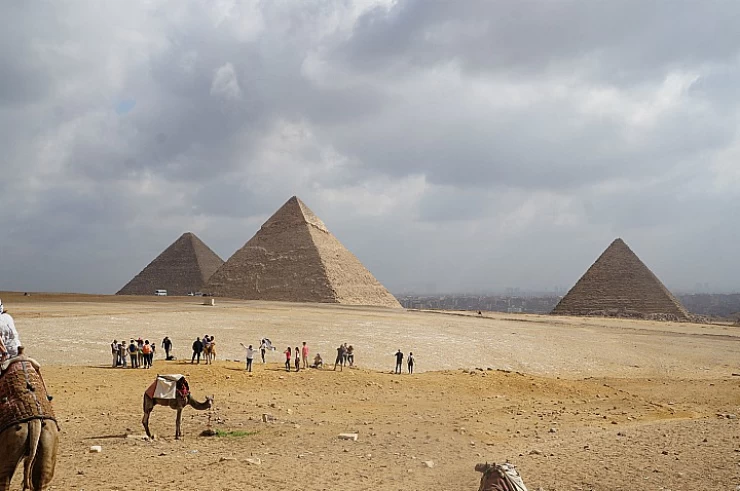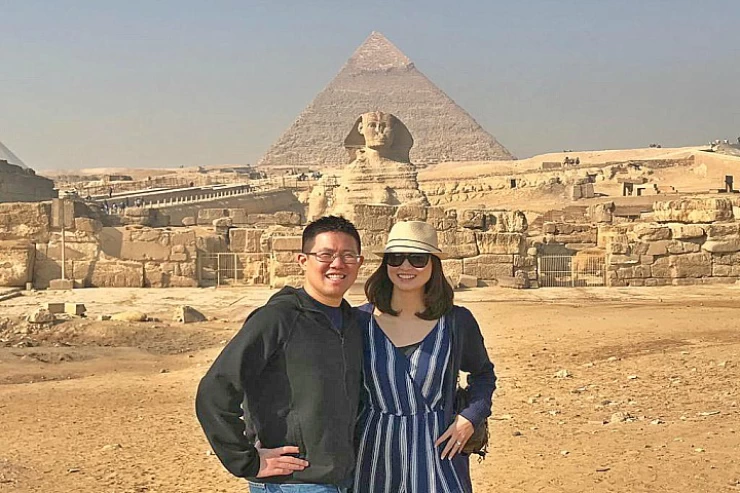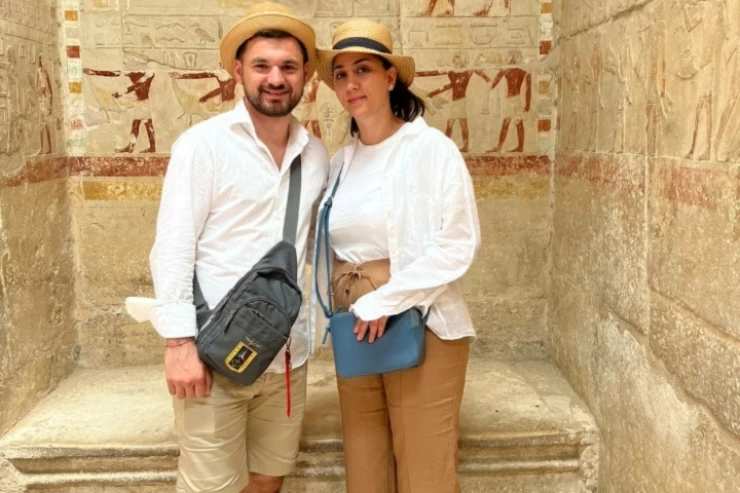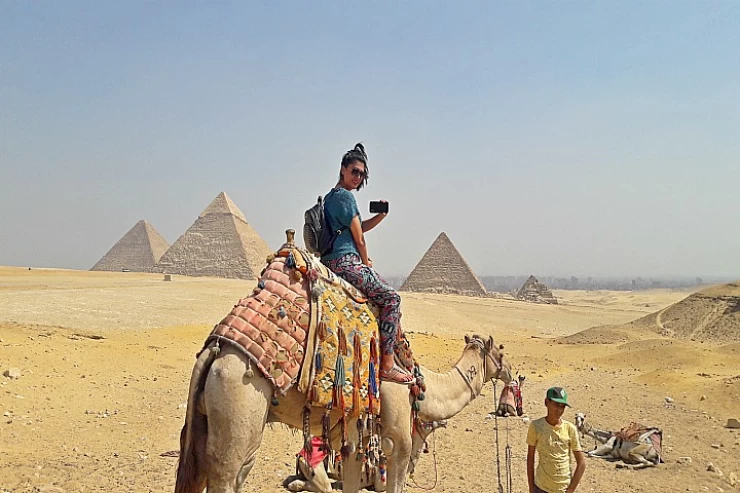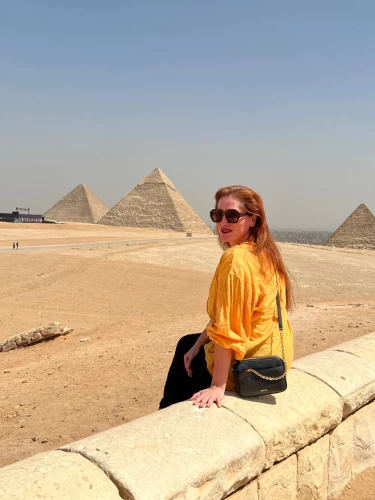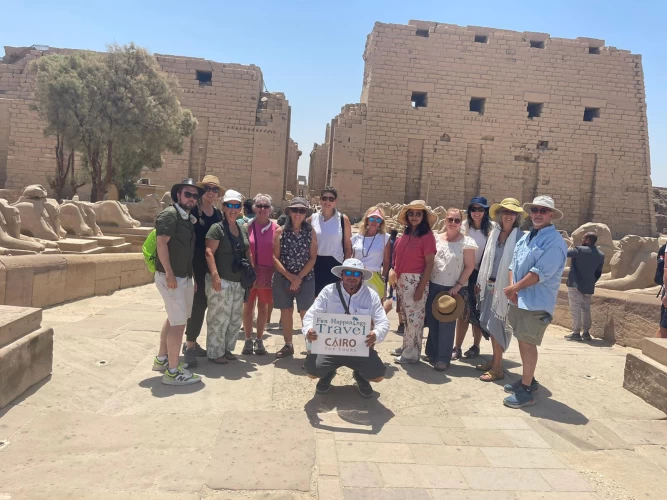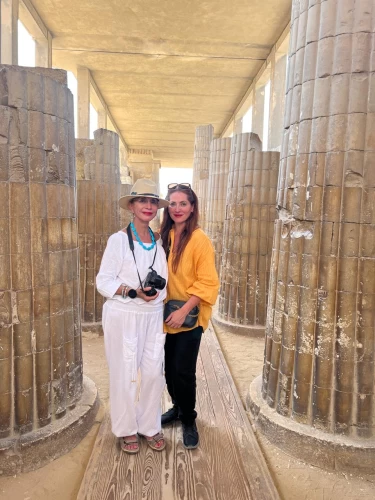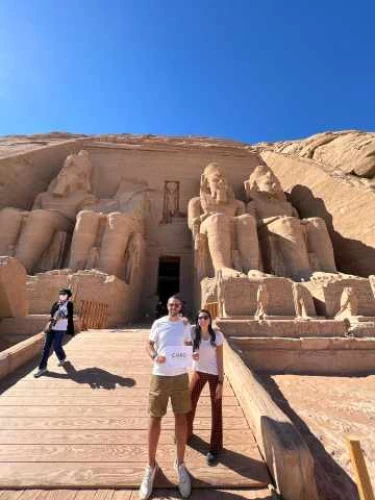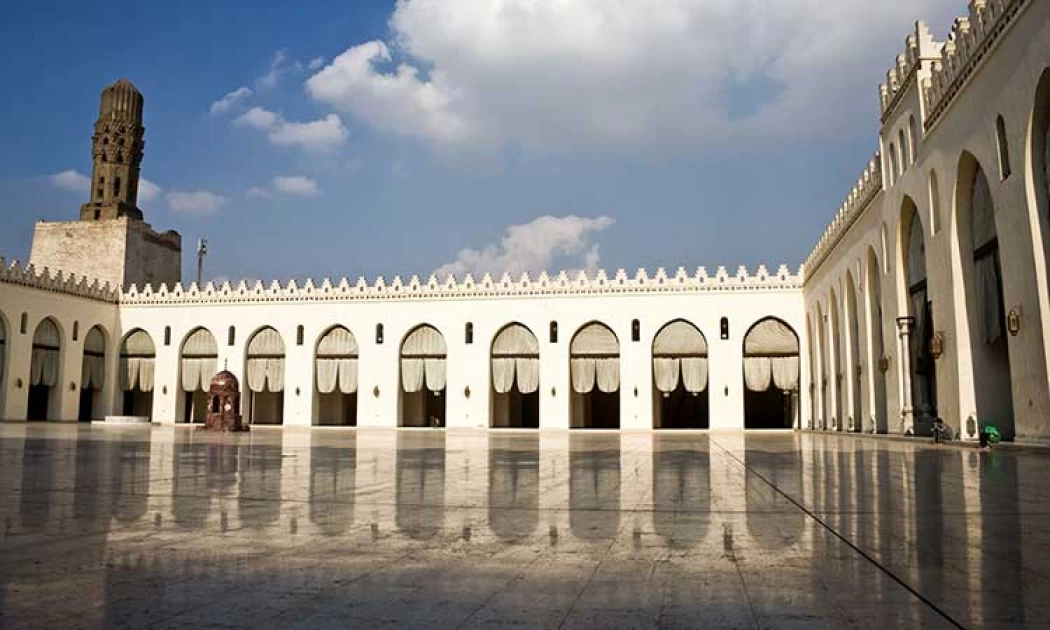
Mosque of al-Hakim bi-Amr Allah
Mosque of al-Hakim bi-Amr Allah
Long ago, a millennium in fact, the groundwork for one of the most ancient, largest, and aesthetically pleasing mosques in Fatimid Cairo was initiated. In 989, caliph Al-Aziz Billah, the fifth of the Fatimid dynasty, realized that Al-Azhar mosque could not contain more worshippers and scholars and therefore began imagining a new mosque, a plan which, however, was cut short with his own death, until “Al-Hakim Amr Allah” the 6th Fatimid caliph, completed it.
The mosque was inaugurated in 1012 AD and named after the ruler. In 1013 AD, the ruler issued a decision to turn the mosque into a “mosque” where jurisprudence is taught, to help the Al-Azhar Mosque to accommodate students and worshippers.
The mosque is located at the end of Al-Moez Street in the Jamaliya neighborhood, next to Bab Al-Fotouh. At the time of its construction, the mosque was outside the walls of Old Cairo, which were built by Gohar al-Saqili, and then became inside the city limits after Badr al-Gamali (480 AH/1087 AD) expanded the city and built the current walls.
After five years of restoration, the archaeological mosque was reopened as a powerful addition to Egypt's Islamic monuments in the historic Cairo area, which is characterized by its stature and important tourist role, as stressed by the Minister of Tourism and Antiquities Ahmed Essy during the opening ceremony of the mosque.
The project for the restoration and revival of the mosque was carried out in cooperation with the Ismaili Bahra community, under the supervision of the Islamic, Coptic and Jewish projects and antiquities sectors of the Supreme Council of Antiquities and the public administration of historical Cairo at a cost of Pound850 million.
Latest Articles
Admin
Aswan Governerate in Egypt
One of Egypt's southern governorates is Aswan Governorate. The city of Aswan serves as its capital. At a latitude of 22 north of the equator (also known as the Tropic of Cancer), it is bounded to the north by the Qena Governorate, to the east by the Red Sea Governorate, to the west by the New Valley Governorate, and to the south by the Republic of Sudan.
Admin
Luxor Governorate Egypt
The capital of the Arab Republic of Egypt is Luxor City, which was once known as "Thebes City" because it served as Egypt's capital during the Pharaonic era. It is situated in the South Upper Egypt region, approximately 670 kilometers from the capital Cairo from the south. It is bordered on the north by Qena Governorate, on the south by Aswan Governorate, on the east by Red Sea Governorate, and on the west by New Valley Governorate.
Admin
History of kafr El Sheikh Governorate
Kafr El Sheikh Governorate is an Egyptian governorate, located in the northernmost part of Egypt in the Nile Delta, with Kafr El Sheikh as its capital. It had a population of 3,172,753 in 2015 and an area of 3,748 km². Its entire area is located north of the delta and overlooks the Mediterranean Sea. The main economic activity of the residents of the governorate is agriculture and fishing, especially the southern lands of the governorate and the lands overlooking the Nile River - Rosetta Branch.
Admin
Egypt's New Administrative Capital
The New Administrative Capital is located between the Cairo-Suez and Cairo-Ain Sokhna roads, 60 km from Cairo and the same distance from Ain Sokhna and Suez. The New Administrative Capital is located on the border of Badr City, in the area between the Cairo-Suez and Cairo-Ain Sokhna roads, just after New Cairo, Mostakbal City and Madinaty.
Admin
Al Gharbia Governorate
Gharbia Governorate is one of the governorates full of archaeological sites, whether they are places or facilities (mosques, churches), as the governorate is a destination for visitors to these places throughout the year, whether they are Egyptians from the different governorates.
Admin
Hamata Islands (Qulaan Archipelago) in Marsa Alam
The Hamata area, south of Marsa Alam in the Red Sea, is one of the most important parts of the Wadi El Gemal Reserve, whether in the desert or the sea. It was named after the sorrel plant, which was distorted to Hamata.







